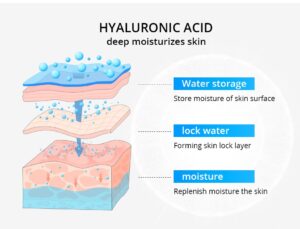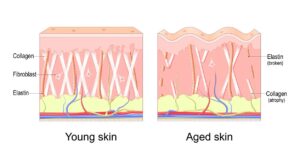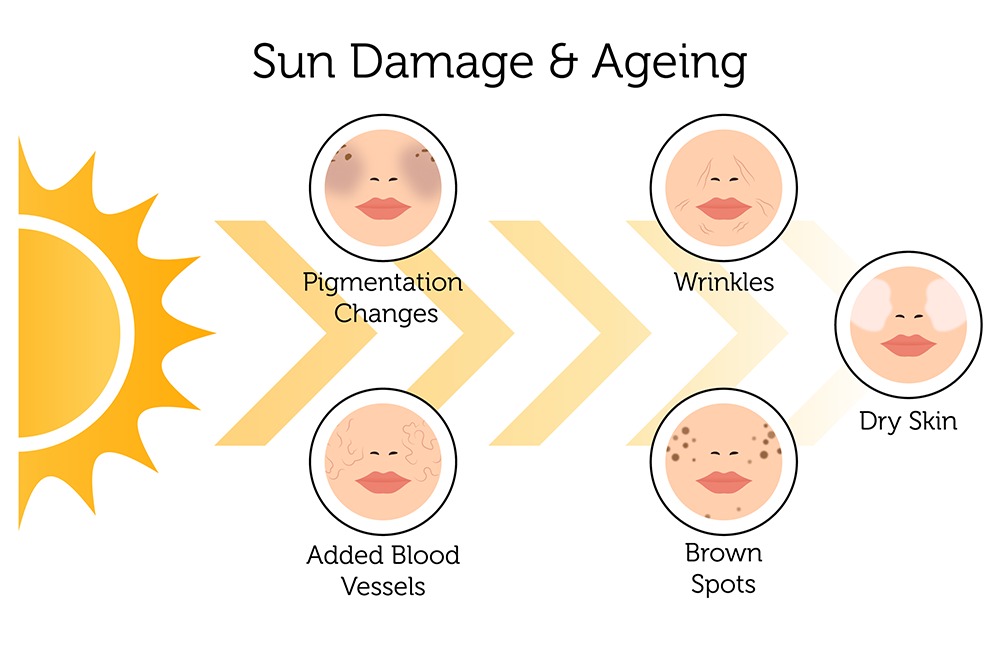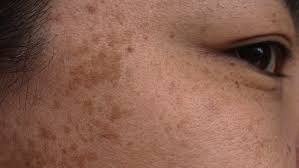Menopause is a significant biological milestone in a woman’s life, marking the end of reproductive capability and the cessation of menstrual cycles. While it is a natural part of aging, menopause brings about profound changes in the body, including the skin. These changes, driven largely by hormonal fluctuations, can impact a woman’s appearance and self-esteem. Understanding the skin transformations during menopause and how to manage them effectively is key to maintaining skin health and confidence.
The Hormonal Connection to Skin Changes
 The primary driver of skin changes during menopause is the decline in estrogen levels. Estrogen plays a crucial role in maintaining skin health by:
The primary driver of skin changes during menopause is the decline in estrogen levels. Estrogen plays a crucial role in maintaining skin health by:
- Stimulating collagen production, which provides structure and elasticity.
- Promoting skin hydration by enhancing the production of natural oils and hyaluronic acid.
- Regulating melanin production, which affects pigmentation.
When estrogen levels drop during menopause, the skin loses these benefits, leading to noticeable changes.
Common Skin Changes During Menopause
1. Thinning Skin
As collagen production declines, the skin becomes thinner and less resilient. This thinning can make the skin more prone to bruising, tearing, and visible signs of aging, such as fine lines and wrinkles.
2. Increased Wrinkles and Fine Lines
Reduced collagen and elastin levels result in a loss of elasticity, making the skin more prone to sagging and the development of wrinkles, especially around the eyes, mouth, and forehead.
3. Dryness and Dehydration
The skin’s ability to retain moisture diminishes due to decreased production of natural oils and hyaluronic acid. This often results in dryness, flakiness, and an overall rough texture.
4. Loss of Volume and Plumpness
Fat loss in the deeper layers of the skin, combined with reduced collagen, can lead to a loss of facial volume. This can cause the cheeks to appear hollow and the skin to sag.
5. Changes in Pigmentation
Hormonal changes can exacerbate hyperpigmentation or age spots, particularly on areas exposed to the sun. This condition, known as melasma or “the mask of menopause,” can create uneven skin tone.
6. Increased Sensitivity
The skin barrier weakens during menopause, making it more susceptible to environmental irritants and allergens. Women may notice heightened sensitivity to skincare products or external factors like pollution and temperature changes.
7. Slower Wound Healing
The body’s ability to repair skin damage slows with age, prolonging the healing process for cuts, bruises, or blemishes.
8. Acne and Breakouts
Despite the decline in estrogen, androgen levels (male hormones present in women) may remain relatively stable, leading to an imbalance. This can result in increased sebum production and menopausal acne, particularly on the jawline and chin.
Understanding the Emotional Impact
The physical changes in the skin during menopause can significantly affect a woman’s self-image and emotional well-being. Wrinkles, sagging, and uneven skin tone may lead to feelings of aging or loss of femininity. Addressing these concerns with empathy and evidence-based solutions is crucial to helping women feel confident and empowered during this transition.
Managing Skin Changes During Menopause
While menopause-related skin changes are natural, there are steps women can take to maintain healthy, vibrant skin:
1.  Prioritize Hydration
Prioritize Hydration
- Use moisturizers rich in humectants like hyaluronic acid and glycerin to retain water in the skin.
- Incorporate occlusive agents, such as ceramides or shea butter, to lock in moisture.
- Drink plenty of water to support hydration from within.
2.  Enhance Collagen Production
Enhance Collagen Production
- Consider topical products containing retinoids or peptides, which stimulate collagen synthesis and improve skin texture.
- Antioxidants like vitamin C can protect collagen from free radical damage and brighten the skin.
- Professional treatments, such as microneedling or laser therapy, can encourage collagen regeneration.
3. Protect Against UV Damage
- Use a broad-spectrum sunscreen with at least SPF 30 daily, even on cloudy days.
- Wear protective clothing and wide-brimmed hats when exposed to the sun.

4. Balance Hormones
- Hormone replacement therapy (HRT) can help mitigate some skin changes by replenishing estrogen levels. However, it should be discussed with a healthcare provider to weigh the benefits and risks.
- Non-hormonal supplements, like phytoestrogens found in soy or flaxseed, may also provide mild skin benefits.
5. Exfoliate Gently
- Regular exfoliation with alpha-hydroxy acids (AHAs) like glycolic acid can remove dead skin cells, improve texture, and promote cell turnover.
- Avoid harsh scrubs that can irritate thinning, sensitive skin.
6.  Address Hyperpigmentation
Address Hyperpigmentation
- Topical treatments with ingredients like niacinamide, kojic acid, or hydroquinone can reduce dark spots and even out skin tone.
- Professional procedures, such as chemical peels or intense pulsed light (IPL) therapy, may offer more dramatic results.
7. Manage Acne
- Use non-comedogenic, oil-free skincare products to prevent clogged pores.
- Spot treatments with benzoyl peroxide or salicylic acid can target blemishes.
- Seek medical advice for persistent or severe acne, which may require prescription treatments.
8. Strengthen the Skin Barrier
- Avoid over-cleansing or using harsh soaps, which can strip the skin of natural oils.
- Opt for gentle, hydrating cleansers and barrier-repair creams containing ceramides or fatty acids.
9. Adopt a Holistic Approach
- Maintain a balanced diet rich in antioxidants, vitamins, and healthy fats to support skin health. Foods like salmon, avocado, and berries are particularly beneficial.
- Regular exercise improves circulation, delivering oxygen and nutrients to the skin.
- Manage stress through mindfulness, yoga, or meditation, as stress hormones can negatively impact the skin.
Professional Help for Menopausal Skin
Dermatologists and aesthetic practitioners can offer specialized treatments to address menopausal skin changes. Options include:
- Dermal Fillers: To restore volume and plumpness.
- Botulinum Toxin (Botox): To smooth dynamic wrinkles.
- Chemical Peels: To improve texture and tone.
- Laser Treatments: For collagen stimulation and pigmentation correction.
Consulting a qualified professional ensures treatments are tailored to individual needs and delivered safely.
Proposed Advances in Skincare for Menopause
The skincare industry has recognized the unique needs of menopausal women and is developing targeted products. These include formulations specifically designed to address collagen loss, dryness, and sensitivity. Look for brands and products marketed as “menopause-friendly” or developed in collaboration with dermatologists.
Additionally, scientific research into the effects of menopause on the skin is expanding, offering hope for more effective treatments and interventions in the future.
Conclusion
Menopause is a transformative phase that brings about inevitable changes to the skin. While these changes can be challenging, they also present an opportunity for women to adapt their skincare routines and embrace new self-care practices.
By understanding the hormonal causes of menopausal skin changes and taking proactive steps to address them, women can maintain healthy, radiant skin. Whether through tailored skincare, professional treatments, or lifestyle adjustments, the key is to prioritize self-care and seek support when needed. With the right approach, it is entirely possible to age gracefully and confidently during this life stage.

